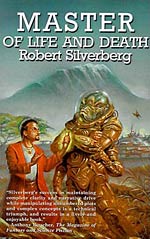
![]() charlesdee
charlesdee
4/29/2014
![]()
Silverberg places this 1957 novel in the year 2232. Earth's population has reached crisis level at seven billion people. (We have actually beaten Silverberg's prediction by a little more that 200 years. Score one for Earth!) After decades of lobbying and political wrangling, the United Nations has green lighted the Bureau of Population Equalization (Popeek). Popeek's mandate includes two procedures. They must relocate people from overcrowded zones to the less densely populated areas of the planet. That's how a few hundred thousand Belgians find themselves in Patagonia. People not affected by these manipulations tend to think this a good thing. More controversial is the euthanasia program the weeds out at birth children with defective genetic tendencies and hastens the death of the incurably ill. The poor and uneducated feel unjustly targeted by this program. Wealthy, educated individuals and organizations write Popeek with suggestions for entire swaths of humanity the Earth could do without.
Roy Walton is the overworked assistant director of Popeek. By the end of the first chapter, he has put himself at risk by allowing a child who might become tubercular a pass on his euthanasia appointment, and after the assassination of his boss he has become interim head of the entire Popeek operation. Over the next nine days, there will be plots and betrayals, a nuclear holocaust on Venus, discouraging news from the first expedition to discover an earthlike planet in another star system, and a public that is approaching revolt. Walton, who is a nice enough guy when the story begins, will learn the efficacy of ruthlessness, manipulative public relations, and how to deal with eight-foot-tall green aliens who breathe ammonia and are none to happy to see humans moving in on their solar system.
Silverberg moves the story along with the no-frills pacing of the best B Movies from the same period, those features that required only 65 – 80 minutes to tell a satisfying story.
http://www.potatoweather.blogspot.com